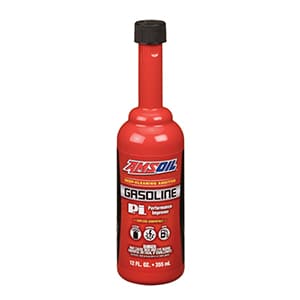Is your car feeling sluggish or lacking power? The issue might be a clogged catalytic converter. Here’s everything you need to know about testing catalytic converters at home to keep your vehicle in top shape.

Understanding Catalytic Converters
A catalytic converter is a critical component of a vehicle’s exhaust system. It converts harmful gases produced by the engine into less harmful emissions before they are released into the atmosphere. Symptoms of a clogged catalytic converter include sluggish performance and a noticeable lack of power, making it essential for vehicle emissions control and overall engine efficiency.
Symptoms of a Clogged Catalytic Converter
- Sluggish Performance: A car that doesn’t accelerate as it should may have a clogged catalytic converter.
- Lack of Power: Struggling to reach higher speeds or climb hills might indicate a blockage.
Function of Catalytic Converters
Catalytic converters work by converting harmful gases into less harmful substances through a series of chemical reactions facilitated by precious metals.
Conversion of Harmful Gases
- Hydrocarbons (HC) to Water (H2O): Unburned fuel in the exhaust is converted into water vapor.
- Carbon Monoxide (CO) to Carbon Dioxide (CO2): Toxic carbon monoxide is transformed into less harmful carbon dioxide.
- Oxides of Nitrogen (NOx) to Nitrogen and Oxygen: These compounds are split into harmless nitrogen and oxygen gases.
This process significantly reduces the environmental impact of vehicle emissions.
Catalytic Converter Components
The efficacy of catalytic converters is attributed to the use of precious metals and their unique chemical properties.

Precious Metals Used
- Rhodium
- Palladium
- Platinum
These metals facilitate the chemical reactions that convert harmful gases into cleaner emissions.
Chemical Reaction Process
As exhaust gases pass through the catalytic converter, they interact with these metals, initiating chemical reactions that change the state of the gases into cleaner forms.
Structure and Design
Catalytic converters are designed to maximize the surface area of the precious metals, ensuring efficient conversion of harmful gases.
Testing Catalytic Converter Efficiency
You can test the efficiency of your catalytic converter at home using simple tools.

Temperature Differential Method
- Using a Pyrometer: Measure the temperature at both the inlet and outlet of the catalytic converter.
- Expected Temperature Increase: The outlet should show a higher temperature, indicating a proper chemical reaction.
Back Pressure Testing
Removing Oxygen Sensor: Replace the oxygen sensor with a back pressure gauge.
Ideal Pressure Readings:
At Idle: Approximately 1.5 PSI.
At 2000-3000 RPM: 3 PSI or less.
Higher back pressure indicates a clogged converter, which can affect vehicle performance.
Exhaust System Maintenance
Proper maintenance of the exhaust system is crucial to prevent issues with the catalytic converter.
Importance of Lubricating Bolts
Rusty bolts can make exhaust system maintenance challenging. Using a metal protectant like AMSOIL MP Metal Protector can help.
Spray 24 Hours Prior: Apply it to the bolts 24 hours before working on the exhaust to loosen rust and make removal easier.

Challenges of Rust in Exhaust Systems
Northern States: Snow and salt can cause significant rust.
Coastal Areas: Exposure to salt water also leads to rust.
AMSOIL MP Metal Protector
Features and Benefits: Penetrates rust and lubricates bolts for easier removal.
Application Method: Spray on bolts and other metal parts that may rust.
Recommended Usage: Apply at least 24 hours before working on the exhaust system for best results.
Rust Prevention
Preventing rust is better than dealing with it later.
AMSOIL Heavy-Duty Metal Protector
Applications: Protects trailer hitches, safety chains, and other metal components.
Protective Coating Formation: Forms a durable coating that prevents rust during storage.
Long-term Storage Benefits: Ideal for items that will be stored for extended periods.
Additional Catalytic Converter Maintenance Tips
Regular checks and prompt action can extend the life of your catalytic converter.
Regular Inspections: Check your converter during routine maintenance.
Addressing Check Engine Lights: Don’t ignore this warning; it could indicate a catalytic converter issue.
Avoiding Physical Damage: Be cautious when driving over obstacles to prevent damage to the converter.
Common Catalytic Converter Issues
Watch out for common problems that can affect your catalytic converter.
Contamination: Poor-quality fuel and oil can contaminate the converter.
Overheating: Excessive heat can damage the internal components.
Physical Damage: Impacts from road debris can cause physical damage.
Importance of Proper Fuel and Oil
The type of fuel and oil you use can impact the lifespan of your catalytic converter.
Recommended Fuel Types: Use high-quality fuels that burn cleaner and reduce the risk of contamination.
High-Quality Oil Benefits: Using premium oil can improve engine performance and extend the life of the catalytic converter.
Environmental Regulations and Catalytic Converters
Catalytic converters are essential for meeting emission standards and legal requirements.
Emission Standards: Converters help vehicles meet stringent emission regulations.
Legal Requirements: Ensure your vehicle has a functional catalytic converter to stay compliant with the law.
Catalytic Converter Theft Prevention

Catalytic converters are valuable, making them a target for thieves.
Reasons for Theft: High market value of the precious metals they contain.
Prevention Methods: Install anti-theft devices, park in secure areas, and consider engraving your vehicle’s VIN on the converter.
Insurance Considerations: Check with your insurance provider for coverage against catalytic converter theft.
DIY vs. Professional Catalytic Converter Replacement
Decide whether to replace your catalytic converter yourself or seek professional help.
Pros and Cons of DIY Replacement: Cost savings vs. the complexity of the task.
When to Seek Professional Help: If the job seems too difficult or if you lack the necessary tools.
Cost Comparisons: Weigh the cost of parts and tools against professional labor charges.
Future of Catalytic Converter Technology
Advancements are continually being made to improve catalytic converter efficiency.
Advancements in Materials: New materials increase durability and efficiency.
Improved Efficiency: Enhanced designs optimize the conversion of harmful gases.
Integration with Electric and Hybrid Vehicles: Catalytic converters are being adapted to work efficiently with newer vehicle technologies.

Frequently Asked Questions
Lifespan of Catalytic Converters
A catalytic converter typically lasts around 100,000 miles, but this can vary based on driving conditions and maintenance.
Signs of Failure
Common signs include a decrease in engine performance, unusual exhaust smells, and the check engine light.
Aftermarket vs. OEM Converters
Aftermarket converters are usually less expensive but may not always meet the quality and durability standards of Original Equipment Manufacturer (OEM) parts. Regular maintenance and understanding how to test a catalytic converter at home can help ensure your vehicle runs smoothly and efficiently.

